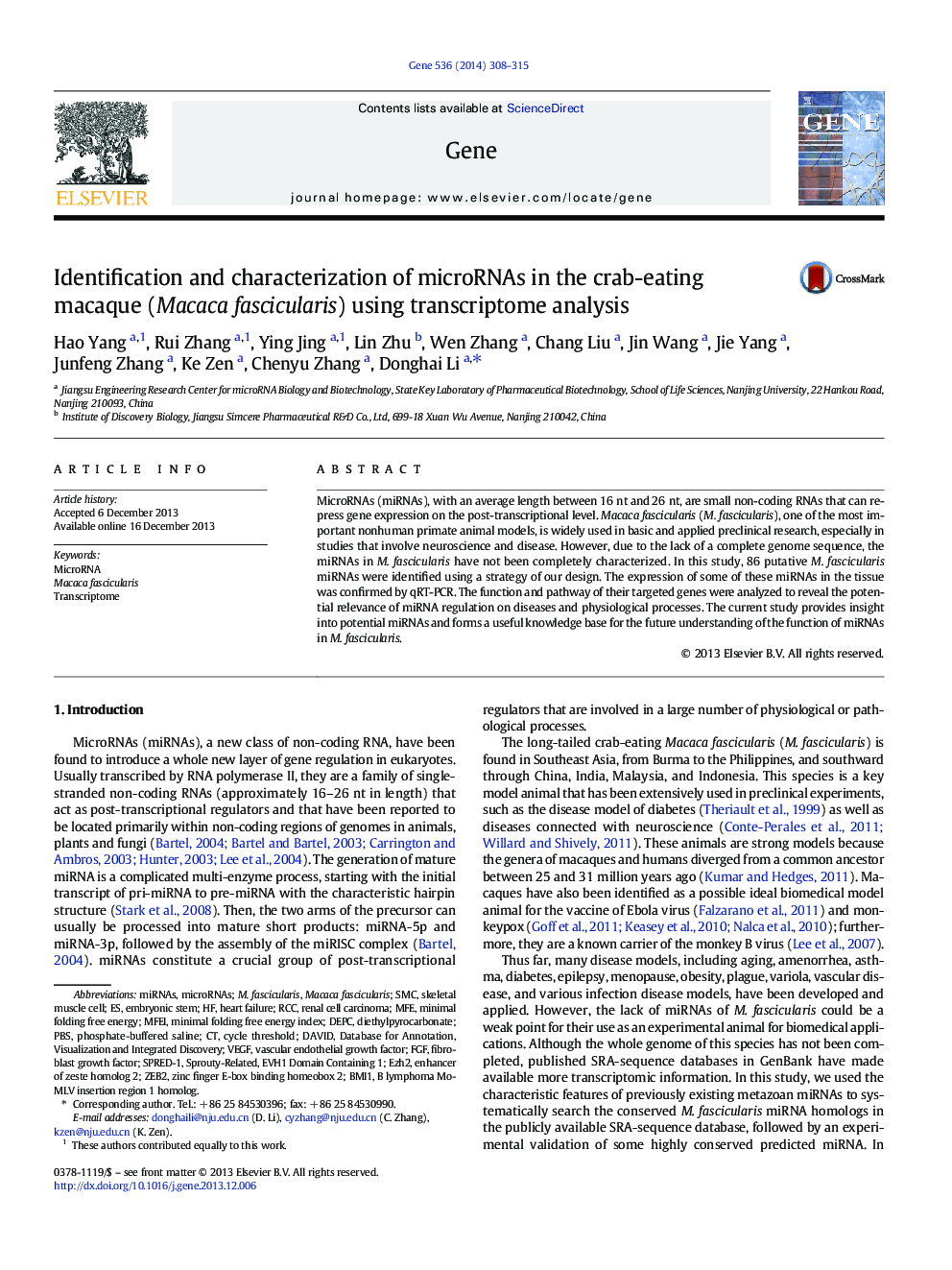| Article ID | Journal | Published Year | Pages | File Type |
|---|---|---|---|---|
| 5905868 | Gene | 2014 | 8 Pages |
Abstract
MicroRNAs (miRNAs), with an average length between 16Â nt and 26Â nt, are small non-coding RNAs that can repress gene expression on the post-transcriptional level. Macaca fascicularis (M. fascicularis), one of the most important nonhuman primate animal models, is widely used in basic and applied preclinical research, especially in studies that involve neuroscience and disease. However, due to the lack of a complete genome sequence, the miRNAs in M. fascicularis have not been completely characterized. In this study, 86 putative M. fascicularis miRNAs were identified using a strategy of our design. The expression of some of these miRNAs in the tissue was confirmed by qRT-PCR. The function and pathway of their targeted genes were analyzed to reveal the potential relevance of miRNA regulation on diseases and physiological processes. The current study provides insight into potential miRNAs and forms a useful knowledge base for the future understanding of the function of miRNAs in M. fascicularis.
Keywords
Minimal folding free energy indexRCCZEB2EZH2PBSB lymphoma Mo-MLV insertion region 1 homologDEPCFGFMFEMacaca fascicularisMFEImiRNAsSMCZinc finger E-box binding homeobox 2Bmi1cycle thresholdTranscriptomeenhancer of zeste homolog 2diethylpyrocarbonateDAVIDmicroRNAsembryonic stemSkeletal muscle cellVascular endothelial growth factorVascular Endothelial Growth Factor (VEGF)fibroblast growth factorPhosphate-buffered salineMicroRNAheart failuredatabase for annotation, visualization and integrated discoveryRenal cell carcinoma
Related Topics
Life Sciences
Biochemistry, Genetics and Molecular Biology
Genetics
Authors
Hao Yang, Rui Zhang, Ying Jing, Lin Zhu, Wen Zhang, Chang Liu, Jin Wang, Jie Yang, Junfeng Zhang, Ke Zen, Chenyu Zhang, Donghai Li,
